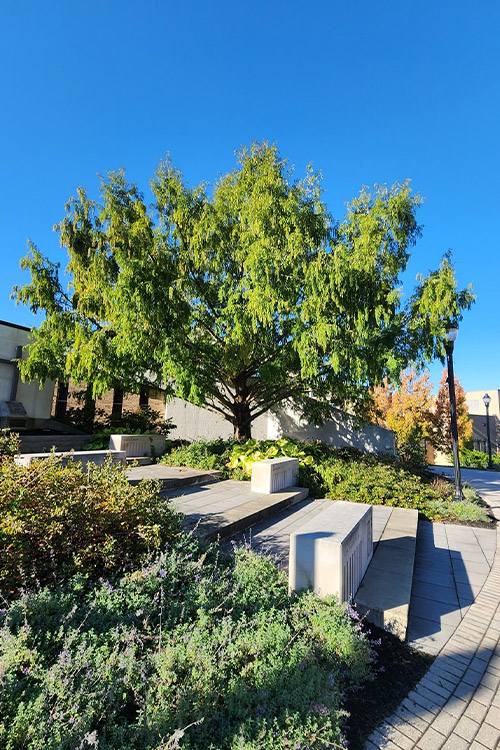Dawn Redwood
Metasequoia glyptostroboides
Overview
The Dawn Redwood was originally known from fossils and was thought to be extinct for millions of years, but was then discovered in 1947 and spread throughout the world. This tree features vibrant, feathery green needles that transform into a copper-hued brown during autumn before shedding them until fresh needles emerge in the following spring. This tree can reach towering heights as tall as 100 feet, with the width of the branches as long as 25 feet. It starts off with a pyramidal shape and as it matures it becomes a more rounded shape and produces 1/2-1 inch round cones.
Cultivation
The Dawn Redwood can grow rapidly, over 2 feet per year. This tree is well suited for Ohio's climate as it likes full sun, but can also withstand both flooding and drought. This tree can do well with most types of soil, but is best suited for moist, well-drained soil.
Biodiversity Sustained
The Dawn Redwood's expansive canopy serves as a crucial refuge for birds and small mammals seeking shelter during the summer months, fostering a biodiverse ecosystem. Despite its less attractive cones and foliage to wildlife, the tree plays a vital role in biodiversity by providing essential habitats to animals such as birds, deer, and insects like the Japanese Beetle who feasts on the foliage that the tree provides.
On Xavier's Campus, over the Next 20 Years, this Tree will:
Stormwater Runoff Avoided: 7,760 Gallons
CO2 Reduction: 4,473 lbs
Electricity Savings: 1,770 kilowatt/hours
Environmental Benefits (in US dollars): $1,187
